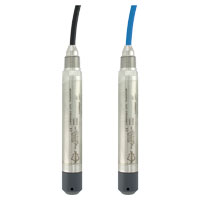What Is Sensor Fouling?
Sensor fouling is the accumulation of unwanted substances or materials on the surface of a sensor. These substances and materials can interfere with the sensors ability to detect and measure accurately. The mechanisms of fouling are complex and depend on many factors such as the sensor type, the operating environment, and the fouling agents.

What are Some Common Types of Fouling?
- Particle Accumulation: Dust dirt, or debris can settle on sensors particularly in outdoor or industrial environments leading to inaccurate readings.
- Chemical Deposits: Exposure to chemicals, oils, or other reactive substances can forma layer on the sensor, interfering with its function.
- Biological Growth: In moisture-rich environments, bacteria, algae, or biofilms can develop on sensor surfaces, particularly in water quality or biomedical sensors.
- Corrosion and Oxidation: Exposure to moisture, salt, or harsh chemicals can lead to corrosion or oxidations of sensor components, reducing sensitivity.
- Moisture Buildup: Water droplets can form on sensors due to temperature changes or humidity, potentially disrupting readings.
- Thermal Effects: High temperatures can lead to the buildup of deposits or degradation of sensor materials, affecting performance.
- Electromagnetic Interference: In electronic sensors, interference from nearby electrical equipment can cause signal distortion.
Impact of Sensor Fouling?
Sensor fouling can cause a reduction in sensitivity, increased measurement error, slower response times, drift and instability, and a reduced life span of the sensor. Thus, various mitigation strategies need to be employed to maintain accuracy and sensor life span. These strategies include surface modifications, self-cleaning mechanisms, biocides or inhibitors, and physical barriers to protect sensor membranes.

